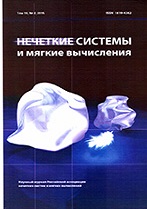|
Short-term load forecasting using fuzzy logic based model: a case study of South Malwa plateau
M. Shaha, R. Agrawalb, S. Gadec
a MSA, Indore (M.P.), India
b Guru Gobind Singh College of Engineering and Research Centre, Nashik, India
c Sandip Institute of Engineering and Management, Nashik, India
Abstract:
The operation of power companies largely depends on forecasting short-term load. It improves the power system's ability to operate efficiently and consistently. The demand for electrical energy is much influenced by several independent factors, including the season, temperature, days of the week, and the weather. Forecast accuracy is important to ensure that customers receive reliable electrical power while sustaining the power system's financial potential. This paper presents a review of various load forecasting techniques and a case study of fuzzy logic-based tri-hourly forecasting of short-term demand in the Indore region. The fuzzy logic toolbox of the MATLAB environment has been used for the implementation of short-term load forecasting. Mamdani type defuzzification method is used for the analysis. The proposed fuzzy inference system-based model shows the maximum percentage error has been less than 2.5%. The effectiveness of the proposed approach is validated on the real data of the MP Paschim Kshetra Vidyut Vitaran Co. Ltd. (MPPKVVCL) Indore city for March 2012. The strength of the model lies in the selection of real data-based input variables which has not been reported in the earlier papers. The proposed model has the capability of forecasting a one-day hourly load accurately.
Keywords:
electricity demand, forecasting techniques, fuzzy logic, short-term load forecasting, South Malwa plateau.
Received: 13.11.2022
Revised: 02.02.2023
Citation:
M. Shah, R. Agrawal, S. Gade, “Short-term load forecasting using fuzzy logic based model: a case study of South Malwa plateau”, Nechetkie Sistemy i Myagkie Vychisleniya, 18:1 (2023), 111–127
Linking options:
https://www.mathnet.ru/eng/fssc105 https://www.mathnet.ru/eng/fssc/v18/i1/p111
|

| Statistics & downloads: |
| Abstract page: | 195 | | Full-text PDF : | 85 | | References: | 57 |
|




 Contact us:
Contact us: Terms of Use
Terms of Use
 Registration to the website
Registration to the website Logotypes
Logotypes








 Citation in format
Citation in format 